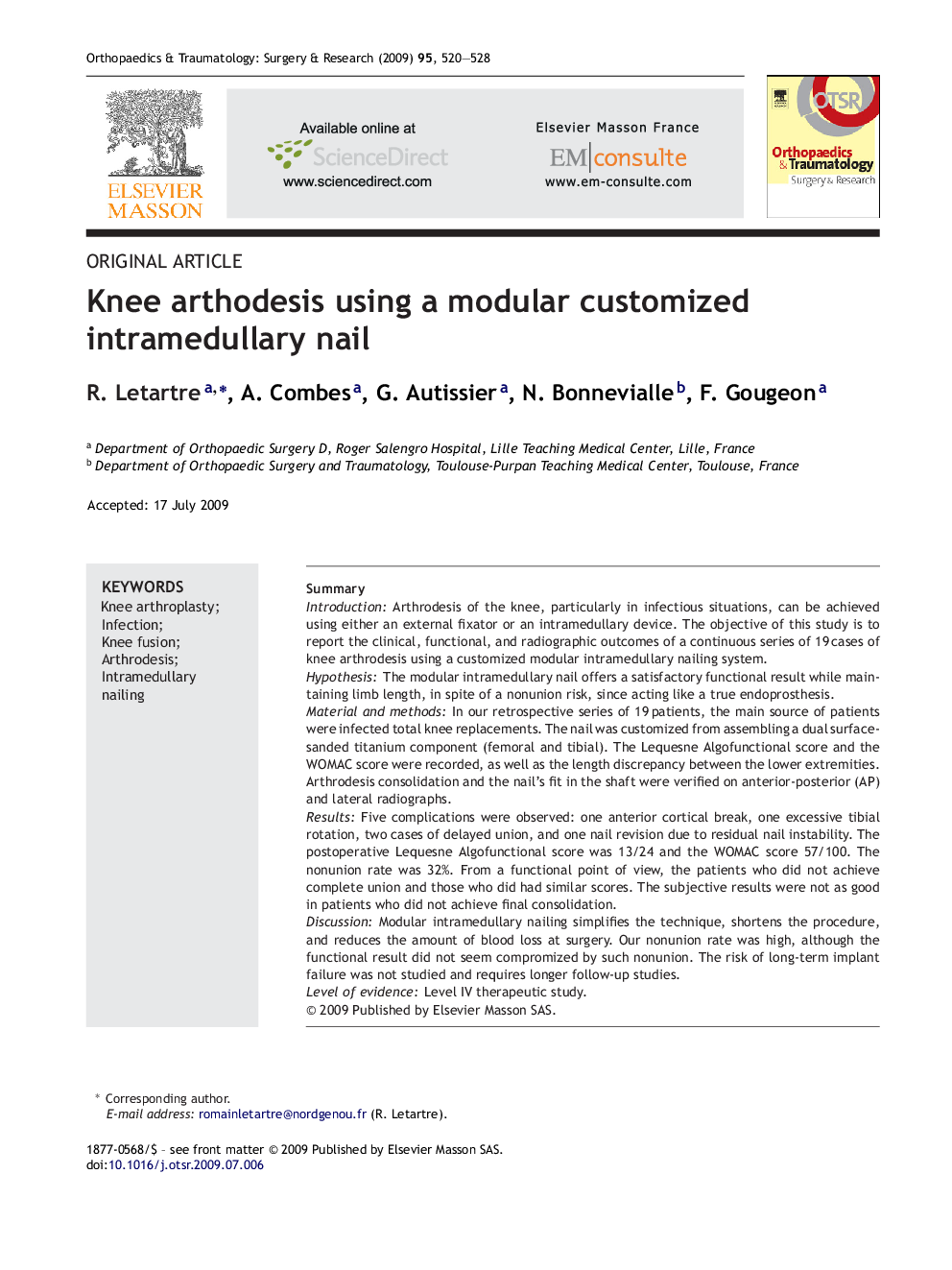| کد مقاله | کد نشریه | سال انتشار | مقاله انگلیسی | نسخه تمام متن |
|---|---|---|---|---|
| 4082571 | 1267645 | 2009 | 9 صفحه PDF | دانلود رایگان |

SummaryIntroductionArthrodesis of the knee, particularly in infectious situations, can be achieved using either an external fixator or an intramedullary device. The objective of this study is to report the clinical, functional, and radiographic outcomes of a continuous series of 19 cases of knee arthrodesis using a customized modular intramedullary nailing system.HypothesisThe modular intramedullary nail offers a satisfactory functional result while maintaining limb length, in spite of a nonunion risk, since acting like a true endoprosthesis.Material and methodsIn our retrospective series of 19 patients, the main source of patients were infected total knee replacements. The nail was customized from assembling a dual surface-sanded titanium component (femoral and tibial). The Lequesne Algofunctional score and the WOMAC score were recorded, as well as the length discrepancy between the lower extremities. Arthrodesis consolidation and the nail's fit in the shaft were verified on anterior-posterior (AP) and lateral radiographs.ResultsFive complications were observed: one anterior cortical break, one excessive tibial rotation, two cases of delayed union, and one nail revision due to residual nail instability. The postoperative Lequesne Algofunctional score was 13/24 and the WOMAC score 57/100. The nonunion rate was 32%. From a functional point of view, the patients who did not achieve complete union and those who did had similar scores. The subjective results were not as good in patients who did not achieve final consolidation.DiscussionModular intramedullary nailing simplifies the technique, shortens the procedure, and reduces the amount of blood loss at surgery. Our nonunion rate was high, although the functional result did not seem compromized by such nonunion. The risk of long-term implant failure was not studied and requires longer follow-up studies.Level of evidenceLevel IV therapeutic study.
Journal: Orthopaedics & Traumatology: Surgery & Research - Volume 95, Issue 7, November 2009, Pages 520–528